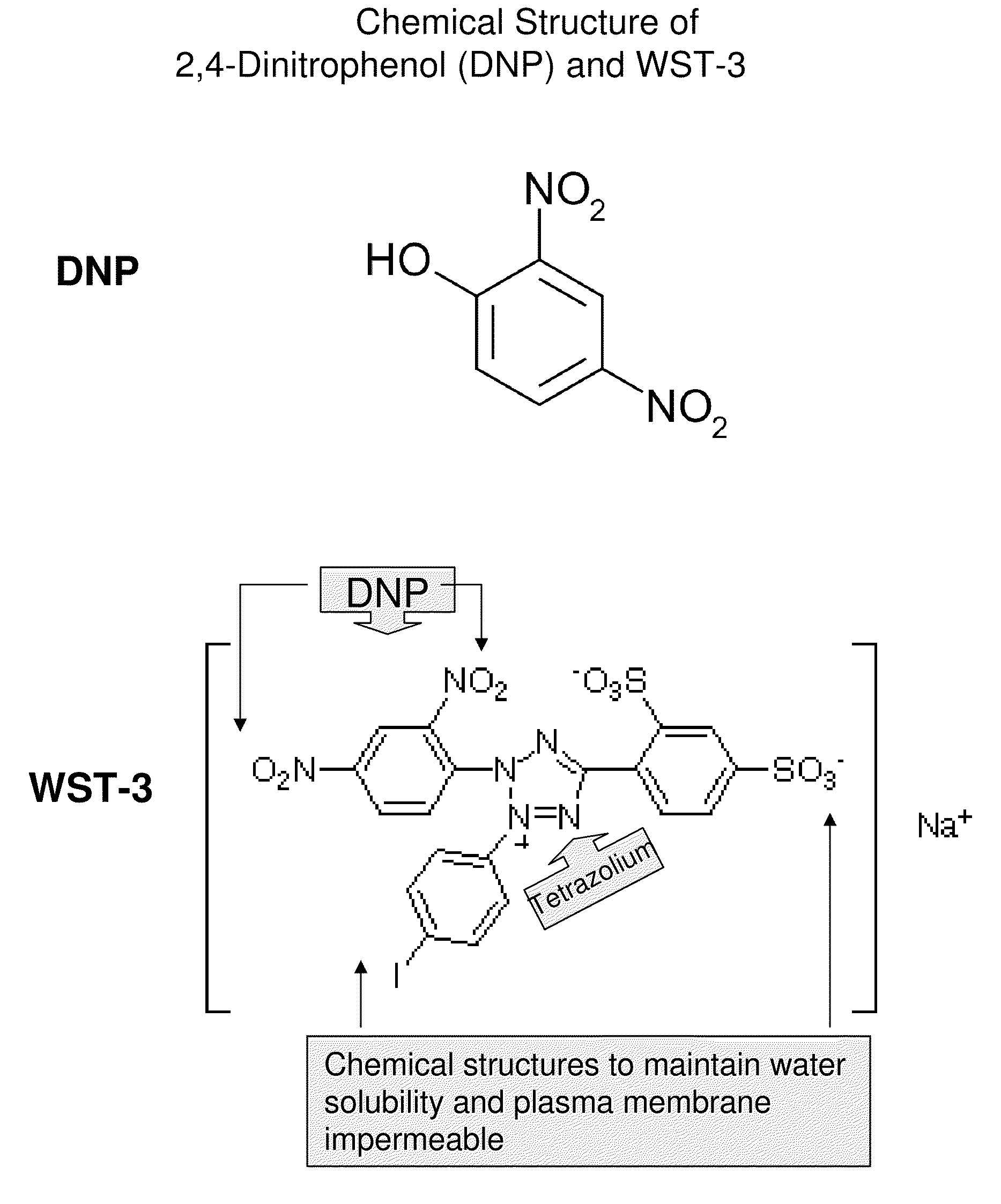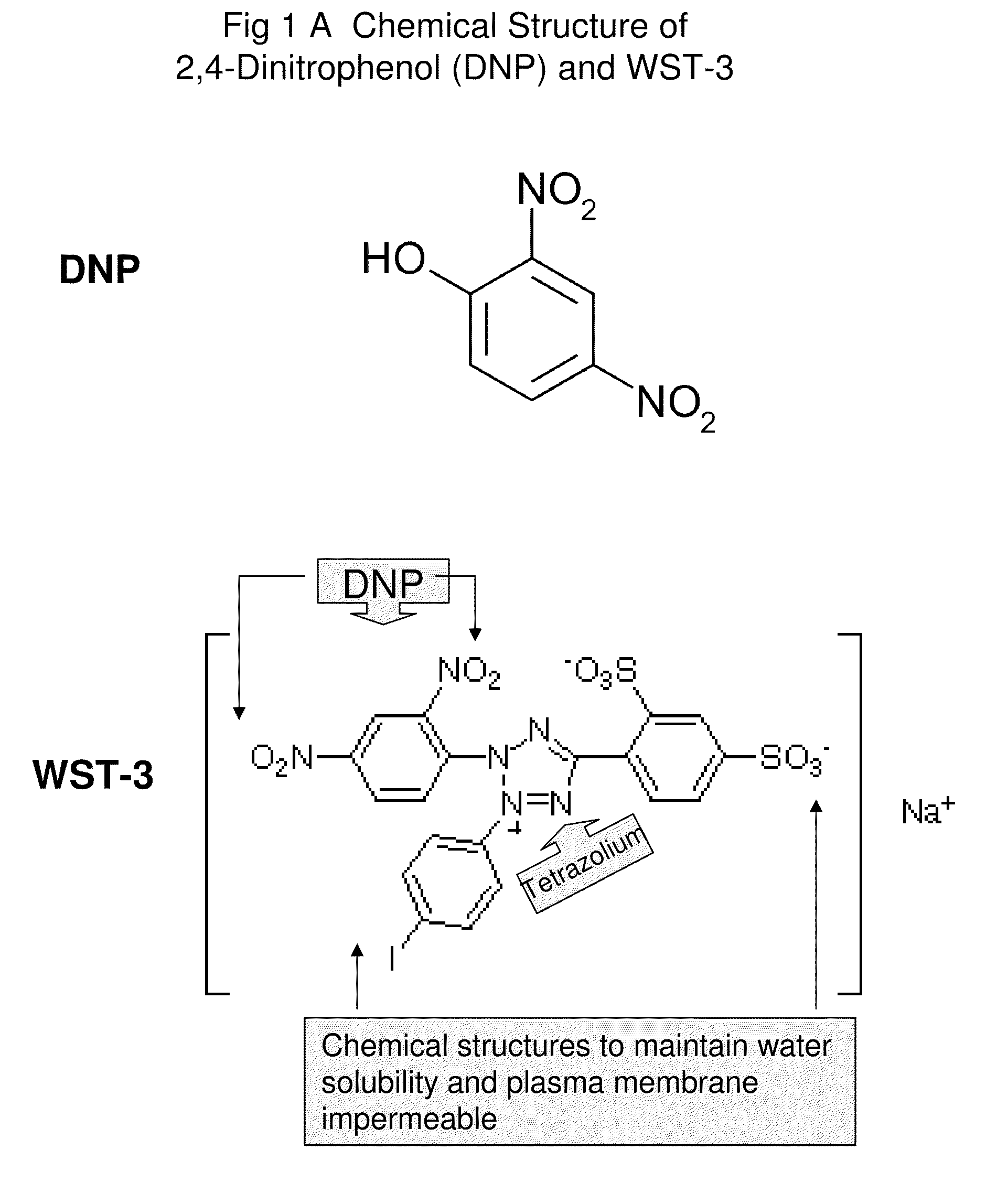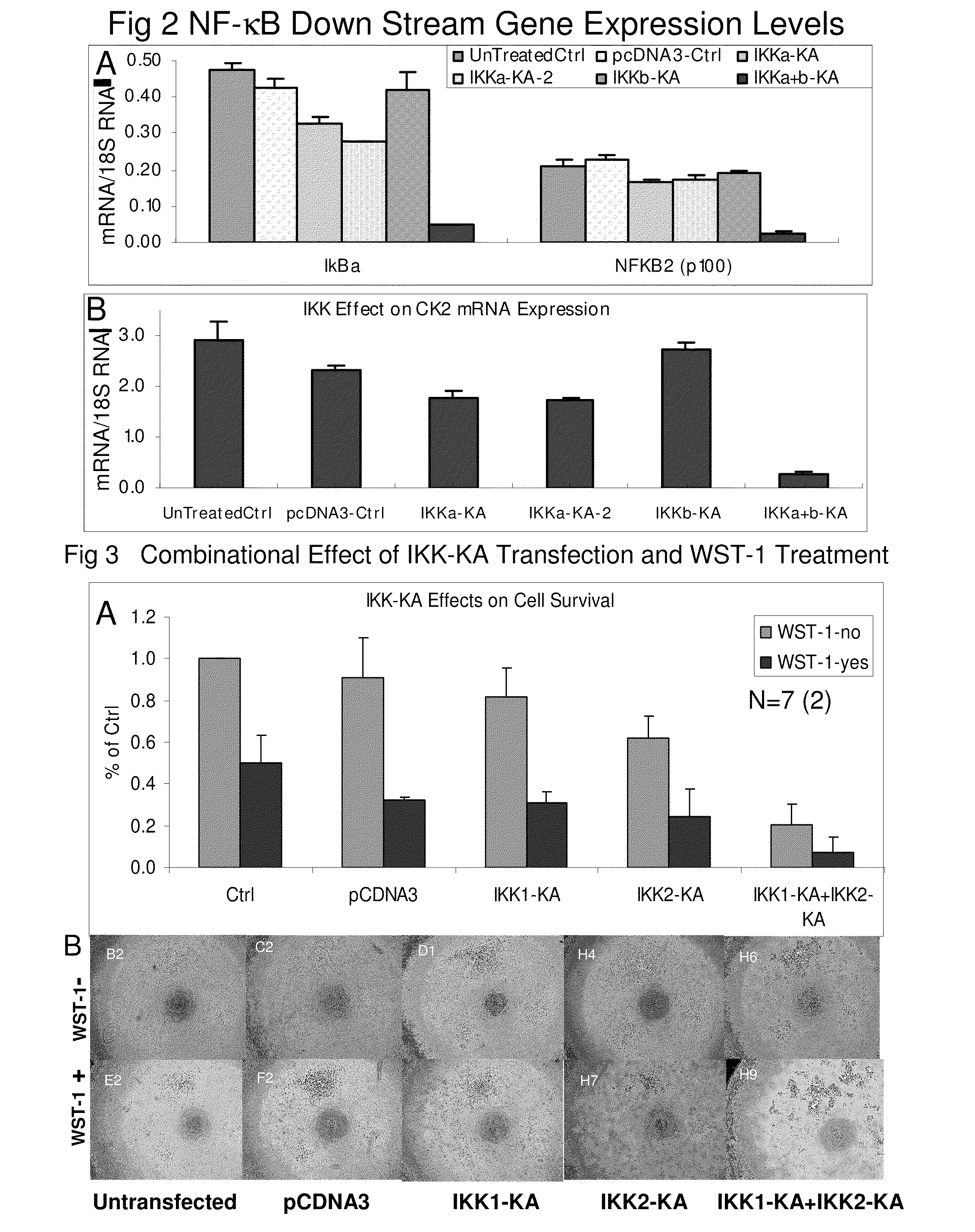Compounds, composition, methods, targets for cancer therapy
a cancer therapy and composition technology, applied in the field of compounds, compositions, methods, targets for cancer therapy, can solve the problems of overlapping pathways inside the cells, complex cellular regulation mechanisms, and limited success rate of this new generation, and achieve the effect of inhibiting the hypoxia response of the cancer and efficient and cancer-specific anti-cancer treatmen
- Summary
- Abstract
- Description
- Claims
- Application Information
AI Technical Summary
Benefits of technology
Problems solved by technology
Method used
Image
Examples
example 1
Synergistic inhibition of NF-KAPPAB activity
[0291]Overview: Normally, NF-kappaB activity is measured by reporter assay, electronic gel mobility shift assay and more recently, DNA binding ELISA. However, all of these methods employ exogenous DNA oligo or constructs carrying consensus NF-kappaB response element sequences for measuring specific NF-KAPPAB DNA binding and transcriptional activity. Additionally, the NF-KAPPAB consensus response element is different from the real promoter sequences that also need complex interaction with multiple molecules and may introduce artificial effects.
[0292]Method: UM-SCC-6 cells were transfected with effectene (Qiagen) i) 20% dominant negative IKK1-KA (K44A) and 80% pUC19, ii) 20% dominant negative IKK2-KA (K44A) and 80% pUC19, iii) 20% dominant negative IKK1-KA (K44A), 20% dominant negative IKK2-KA (K44A) and 60% pUC19, iv) 20% pcDNA3 and 80% pUC19 as negative control, for 72 hours. At the end of transfection, cells were lysed with lysis solution...
example 2
Simultaneous Inhibition of IKK1 and IKK2 Also Lead to Cancer Cell Death
[0294]In addition to the inhibition of NF-KAPPAB activity, cell death associated with cotransfection of K44A-IKK1 and K44A-IKKβ into UM-SCC-6 cells (FIG. 3). 48 hours after tranfection, K44A-IKK1 and K44A-IKK2 co-transfected cells showed 85% reduction in cell number (FIG. 3 WST-1 no) and dramatic cell death (FIG. 3B). The data represents the average of 7 sets of duplicates. This result indicates that inhibition of NF-KAPPAB activity does lead to cancer cell death and that this can be reached only by inhibiting both IKK1 and IKK2 simultaneously. In addition, adding tetrazolium dye WST-1r further enhanced cancer cell death caused by double inhibition of IKKs (FIG. 3 WST-1-yes). Following inhibition of both IKK1 and IKK2 treating cells with WST-1r further enhance cell death (FIG. 3 WST-1-yes). In FIG. 3A about 80% reduction of cell number in K44A-IKK1 and K44A-IKK2 cotransfected cells and over 95% reduction when the...
example 3
WST-1 promote HT1080 human sarcoma cell death by combination with DNA Transfection and IKK Inhibitor Treatment
[0295]Methods: HT1080 cells were cultured in 96 well plates and transfected with one of the pUC19, pcDNA3, IKK1-KA, IKK1-KA+PUC19, or pcDNA3+pUC19 DNA vectors for 24 hours followed with treatment of IKK Inhibitor IIII at 3-30 μM for another 24 hours and, then, treated with 10% WST-1 for 4 hours and cultured overnight before detection. The same treatments of cells were measured at 24, 48 and 96 hours after WST-1 treatment. Cell viability was measured by Cell Count Kit 8 (CCK8).
[0296]Data showed (1) significant IKK inhibitor III dose dependent induction of cell death from the cells that were transfected with any of the DNA vectors at 24, 48 and 96 hour after WST-1 treatment comparing to non transfected control cells, but no significant difference between pUC19 vector only from IKK1-KA vector (FIG. 4); (2) further induced cell death and decreased cell survival detected from the...
PUM
| Property | Measurement | Unit |
|---|---|---|
| time | aaaaa | aaaaa |
| treatment time | aaaaa | aaaaa |
| time | aaaaa | aaaaa |
Abstract
Description
Claims
Application Information
 Login to View More
Login to View More - R&D
- Intellectual Property
- Life Sciences
- Materials
- Tech Scout
- Unparalleled Data Quality
- Higher Quality Content
- 60% Fewer Hallucinations
Browse by: Latest US Patents, China's latest patents, Technical Efficacy Thesaurus, Application Domain, Technology Topic, Popular Technical Reports.
© 2025 PatSnap. All rights reserved.Legal|Privacy policy|Modern Slavery Act Transparency Statement|Sitemap|About US| Contact US: help@patsnap.com



